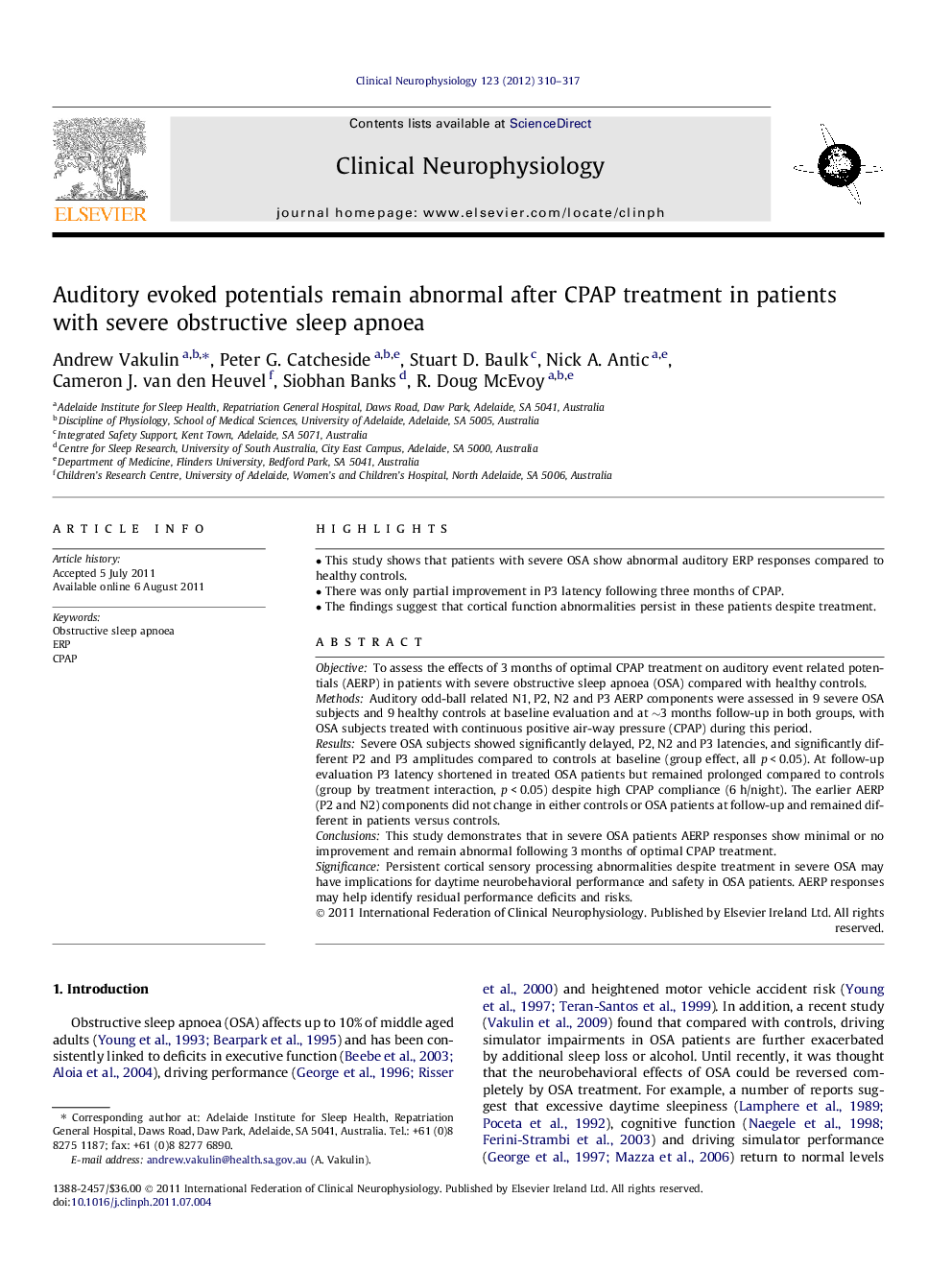| Article ID | Journal | Published Year | Pages | File Type |
|---|---|---|---|---|
| 3045629 | Clinical Neurophysiology | 2012 | 8 Pages |
ObjectiveTo assess the effects of 3 months of optimal CPAP treatment on auditory event related potentials (AERP) in patients with severe obstructive sleep apnoea (OSA) compared with healthy controls.MethodsAuditory odd-ball related N1, P2, N2 and P3 AERP components were assessed in 9 severe OSA subjects and 9 healthy controls at baseline evaluation and at ∼3 months follow-up in both groups, with OSA subjects treated with continuous positive air-way pressure (CPAP) during this period.ResultsSevere OSA subjects showed significantly delayed, P2, N2 and P3 latencies, and significantly different P2 and P3 amplitudes compared to controls at baseline (group effect, all p < 0.05). At follow-up evaluation P3 latency shortened in treated OSA patients but remained prolonged compared to controls (group by treatment interaction, p < 0.05) despite high CPAP compliance (6 h/night). The earlier AERP (P2 and N2) components did not change in either controls or OSA patients at follow-up and remained different in patients versus controls.ConclusionsThis study demonstrates that in severe OSA patients AERP responses show minimal or no improvement and remain abnormal following 3 months of optimal CPAP treatment.SignificancePersistent cortical sensory processing abnormalities despite treatment in severe OSA may have implications for daytime neurobehavioral performance and safety in OSA patients. AERP responses may help identify residual performance deficits and risks.
► This study shows that patients with severe OSA show abnormal auditory ERP responses compared to healthy controls. ► There was only partial improvement in P3 latency following three months of CPAP. ► The findings suggest that cortical function abnormalities persist in these patients despite treatment.
